Each region has its own history, its own specificity, and unique natural beauties. The Italian regions are all beautiful and deserve to be explored far and wide, lived, and loved. But how many regions are there? Which are the largest and which are the smallest? How many of these are washed by the sea?
Check out these amazing hotel deals!
- Save up to 30% on your hotel in Hawaii!
- Last-minute holiday hotel deals
- Top hotel deals for a new year trip
- Visiting Paris? Find the Best Deals & Reviews at TripAdvisor.
- Save 30% on hotels in Ocean City, Maryland...a TripAdvisor Top 10 Summer Destination!
- Save up to 30% on your hotel on your Winter Vacation!
- Find top-rated hotels at the lowest prices on TripAdvisor. Check rates now!
- Save up to 30% on hotels for a romantic getaway!!
In this article, you will find these and many other fun facts about the Italian Regions!
19, 20, or 21: How Many Regions of Italy Are There?
Italy is made up of 20 regions, 5 of which have a special statute and 15 have an ordinary statute. However, the number of regions has varied over the years.
At the birth of the Republic, there were 19: Abruzzo and Molise were merged into a single body called “Abruzzi and Molise”; they split only in 1963. There were no regions into the Italian legal system, only districts of statistical-administrative decentralization”; the regions were introduced in 1948.
Is there a 21st Italian region? The answer is no. However, in the past, there has been debate on the possible establishment of a single territorial body named Lunezia (or Emilia-Lunense), which would have included the provinces of La Spezia, Massa-Carrara, Parma, Piacenza, Reggio Emilia and Mantua, and partly Cremona and Lucca.
Ranking by Size
| Region | Size (sq km) | Capital | Position |
| Sicily | 25,832.39 | Palermo | 1 |
| Piedmont | 25,387.07 | Turin | 2 |
| Sardinia | 24,100.02 | Cagliari | 3 |
| Lombardy | 23,863.65 | Milan | 4 |
| Tuscany | 22,987.04 | Florence | 5 |
| Emilia Romagna | 22,452.78 | Bologna | 6 |
| Puglia | 19,540.90 | Bari | 7 |
| Veneto | 18,407.42 | Venice | 8 |
| Lazio | 17,232.29 | Rome | 9 |
| Calabria | 15,221.90 | Catanzaro | 10 |
| Campania | 13,670.95 | Naples | 11 |
| Trentino Alto Adige | 13,605.50 | Trento | 12 |
| Abruzzo | 10,831.84 | L’Aquila | 13 |
| Basilicata | 10,073.32 | Power | 14 |
| Marche | 9,401.38 | Ancona | 15 |
| Umbria | 8,464.33 | Perugia | 16 |
| Friuli Venezia Giulia | 7,862.30 | Trieste | 17 |
| Liguria | 5,416.21 | Genoa | 18 |
| Molise | 4,460.65 | Campobasso | 19 |
| Valle d’Aosta | 3,260.90 | Aosta | 20 |
Ranking by Population
| Region | Population | Density | Position |
| Lombardy | 10.008.349 | 419 inhabitants per sq. km | 1 |
| Lazio | 5,888,472 | 342 inhabitants per sq. km | 2 |
| Campania | 5,850,850 | 428 inhabitants per sq. km | 3 |
| Sicily | 5,074,261 | 192 inhabitants per sq. km | 4 |
| Veneto | 4,915,123 | 267 inhabitants per sq. km | 5 |
| Emilia Romagna | 4,448,146 | 198 inhabitants per sq. km | 6 |
| Piedmont | 4,404,246 | 173 inhabitants per sq. km | 7 |
| Puglia | 4,077,166 | 209 inhabitants per sq. km | 8 |
| Tuscany | 3,744,398 | 163 inhabitants per sq. km | 9 |
| Calabria | 1,970,521 | 129 inhabitants per sq. km | 10 |
| Sardinia | 1,658,138 | 60 inhabitants per sq. km | 11 |
| Liguria | 1,571,053 | 290 inhabitants per sq. km | 12 |
| Marche | 1,543,752 | 164 inhabitants per sq. km | 13 |
| Abruzzo | 1,326,513 | 123 inhabitants per sq. km | 14 |
| Friuli Venezia Giulia | 1,221,218 | 155 inhabitants per sq. km | 15 |
| Trentino Alto Adige | 1,059,114 | 78 inhabitants per sq. km | 16 |
| Umbria | 891.181 | 105 inhabitants per sq. km | 17 |
| Basilicata | 573.694 | 57 inhabitants per sq. km | 18 |
| Molise | 312.027 | 70 inhabitants per sq. km | 19 |
| Valle d’Aosta | 127,329 | 39 inhabitants per sq. km | 20 |
List of Italian Regions
1. Aosta Valley
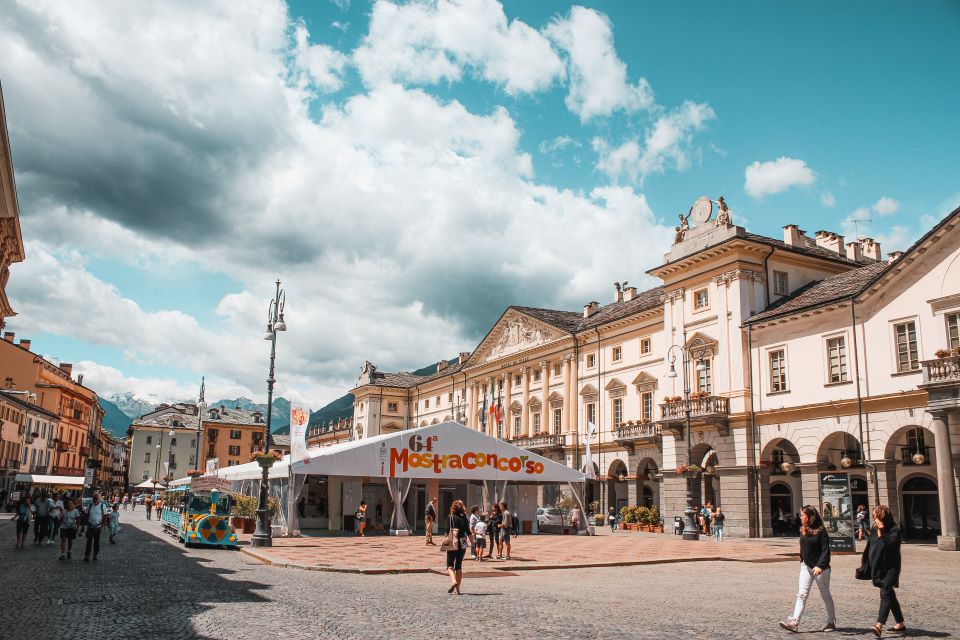
Number of Provinces: 1
Number of municipalities: 74
Regional capital: Aosta
Borders: Switzerland to the north, France to the west, Piedmont to the south and east.
Bathed by the Sea: –
Main mountains: Mont Blanc (4,810 m), Lyskamm / Monte Rosa (4,527 m), Matterhorn (4,478 m), Gran Paradiso (4,061 m)
Main rivers: Dora Baltea
Main lakes: Beauregard Lake, Place Moulin Lake, Great Lake
Main islands: –
Airports: Aosta Valley Airport “Corrado Gex”
Cities of tourist interest: Aosta, Courmayeur
2. Lombardy
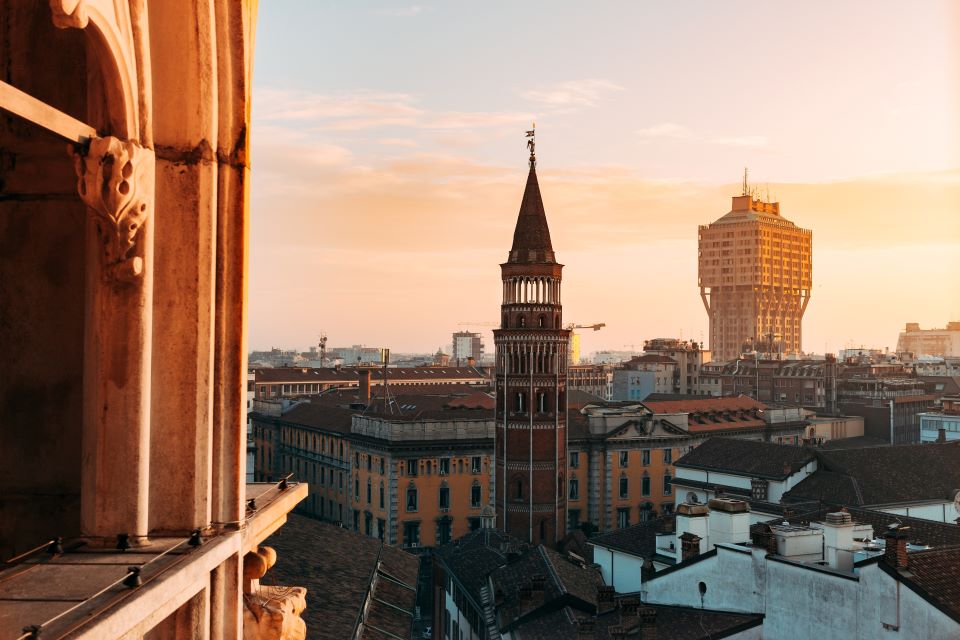
Number of Provinces: 12 (Bergamo, Brescia, Como, Cremona, Lecco, Lodi, Mantua, Milan, Monza, Pavia, Sondrio, Varese)
Number of municipalities: 1,527
Regional capital: Milan
Borders: Switzerland to the north, Piedmont to the west, Emilia-Romagna to the south, Veneto and Trentino-Alto Adige to the east
Bathed by the sea: –
Main mountains: Pizzo Zupò / Bernina (3,996 m), Monte Cevedale (3,764 m)
Main rivers: Po, Adda, Oglio, Ticino, Churches, Lambro, Serio
Main lakes: Lake Garda, Lake Maggiore, Lake Como, Lake Iseo, Lake Lugano, Lake Varese, Lake Mezzola, Lake Annone.
Main islands: Monte Isola (in Lake Iseo)
Airports: Bergamo-Orio al Serio Airport, Brescia-Montichiari Airport, Milan-Linate Airport, Milan-Malpensa Airport.
Cities of tourist interest: Milan, Bergamo, Como, Mantua, Chiavenna
3. Liguria
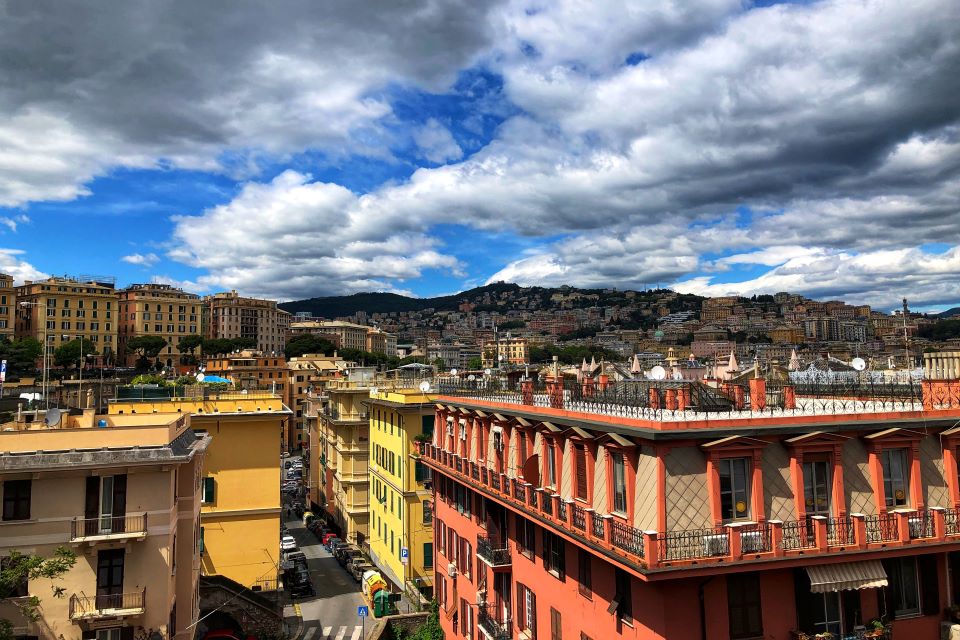
Number of provinces: 4 – Genoa, Imperia, La Spezia, Savona
Number of municipalities: 235
Regional capital: Genoa
Borders: France to the west, Piedmont to the north, Emilia-Romagna to the north-east, Tuscany to the south-east
Bathed by the sea: Ligurian to the south
Main mountains: Monte Saccarello (2,200 m), Monte Maggiorasca (1,799 m)
Main rivers: Vara
Main lakes: Lake of Brugneto
Main islands: Palmaria
Airports: Albenga-Villanova Airport, Genoa Sestri Ponente Airport
Cities of tourist interest: Genoa, Imperia, La Spezia, Savona, Portofino
4. Piedmont
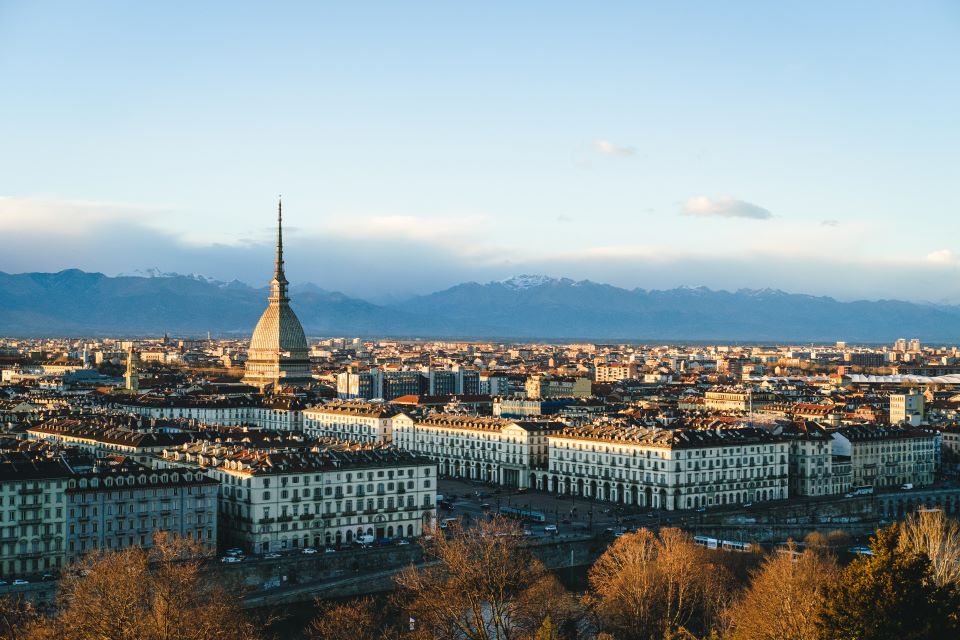
Number of provinces: 8 – Alessandria, Asti, Biella, Cuneo, Novara, Turin, Verbania, Vercelli
Number of municipalities: 1,202
Regional capital: Turin
Borders: Switzerland and Valle d’Aosta to the north, France to the west, Liguria to the south, Emilia-Romagna and Lombardy to the east
Bathed by the sea: –
Main mountains: Punta Nordend / Monte Rosa (4,609 m), Roc / Gran Paradiso (4,609 m)
Main rivers: Po, Tanaro, Ticino, Dora Baltea, Agogna, Sesia, Dora Riparia, Stura di Demonte.
Main lakes: Lake Maggiore, Lake Orta, Lake Viverone, Lake Mergozzo
Main islands: –
Airports: Cuneo-Levaldigi Airport, Turin-Caselle Airport
Cities of tourist interest: Turin, Alessandria, Asti, Verbania, Vercelli, Orta San Giulio
5. Emilia-Romagna
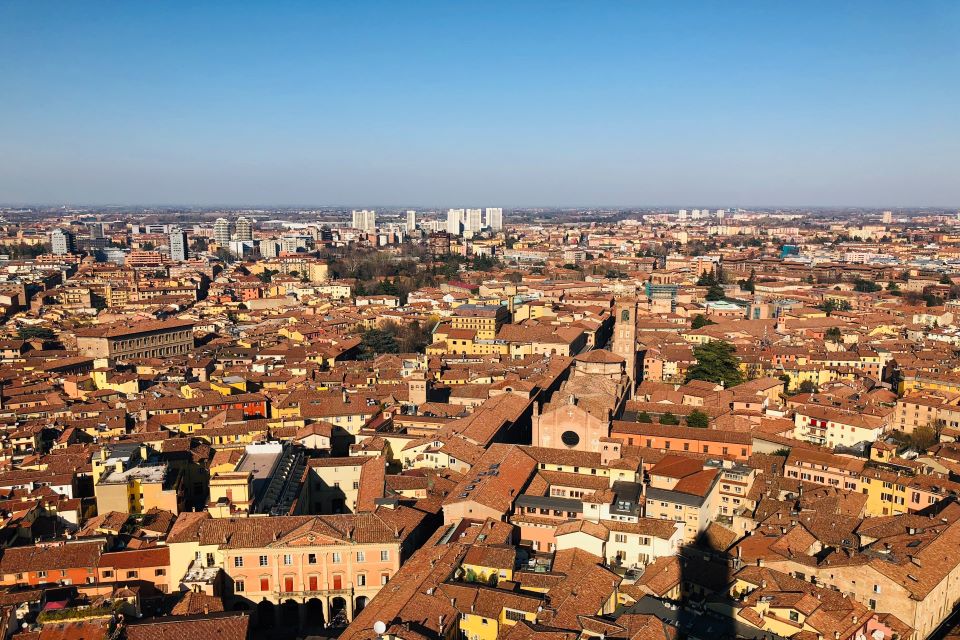
Number of provinces: 9 – Bologna, Ferrara, Forlì, Modena, Parma, Piacenza, Ravenna, Reggio nell’Emilia, Rimini
Number of municipalities: 334
Regional capital: Bologna
Borders: Veneto and Lombardy to the north, Piedmont and Liguria to the west, Tuscany to the south, Marche and San Marino to the southeast
Bathed by the sea: Adriatic to the east
Main mountains: Monte Cimone (2,165 m), Monte Cusna (2,120 m)
Main rivers: Po, Reno, Secchia, Panaro, Savio, Taro, Trebbia, Enza
Main lakes: Comacchio valleys
Main islands: –
Airports: Bologna-Borgo Panigale Airport, Parma Airport, Rimini-Miramare Airport, Forlì Airport
Cities of tourist interest: Bologna, Ferrara, Modena, Piacenza, Parma, Ravenna, Rimini
6. Veneto

Number of provinces: 7 – Belluno, Padua, Rovigo, Treviso, Venice, Verona, Vicenza
Number of municipalities: 576
Regional capital: Venice
Borders: Friuli-Venezia Giulia to the east, Austria to the north, Trentino-Alto Adige to the north-west, Lombardy to the west, Emilia-Romagna to the south
Bathed by the sea: Adriatic to the south-east
Main mountains: Marmolada (3,342 m), Antelao (3,264 m), Le Tofane (3,243 m)
Main rivers: Po, Adige, Piave, Brenta, Bacchiglione, Livenza
Main lakes: Lake Garda, Lake S. Croce
Main islands: –
Airports: Treviso-Sant’Angelo Airport, Venice-Tessera Airport, Verona-Villafranca Airport
Cities of tourist interest: Venice, Padua, Treviso, Verona, Vicenza
7. Friuli-Venezia Giulia
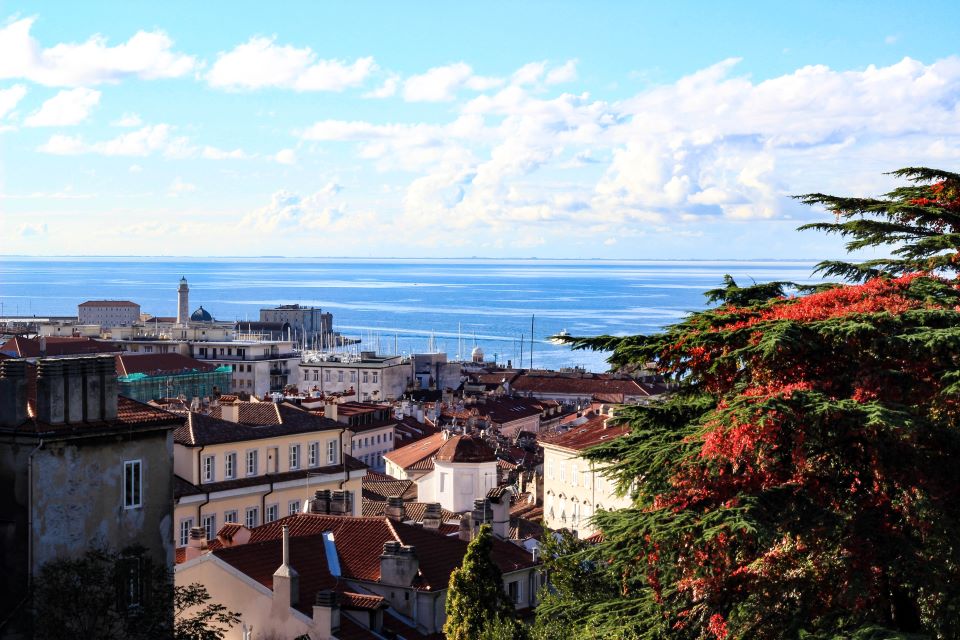
Number of provinces: 4 – Gorizia, Pordenone, Trieste, Udine
Number of municipalities: 216
Regional capital: Trieste
Borders: Slovenia to the east, Austria to the north, Veneto to the west
Bathed by the sea: Adriatic in the south
Main mountains: Monte Coglians (2,780 m), Jof di Montasio (2,753 m)
Main rivers: Tagliamento, Isonzo
Main lakes: Lake Cavazzo
Main islands: –
Airports: Trieste-Ronchi dei Legionari Airport
Cities of tourist interest: Trieste, Gorizia, Pordenone, Udine
8. Trentino-Alto Adige
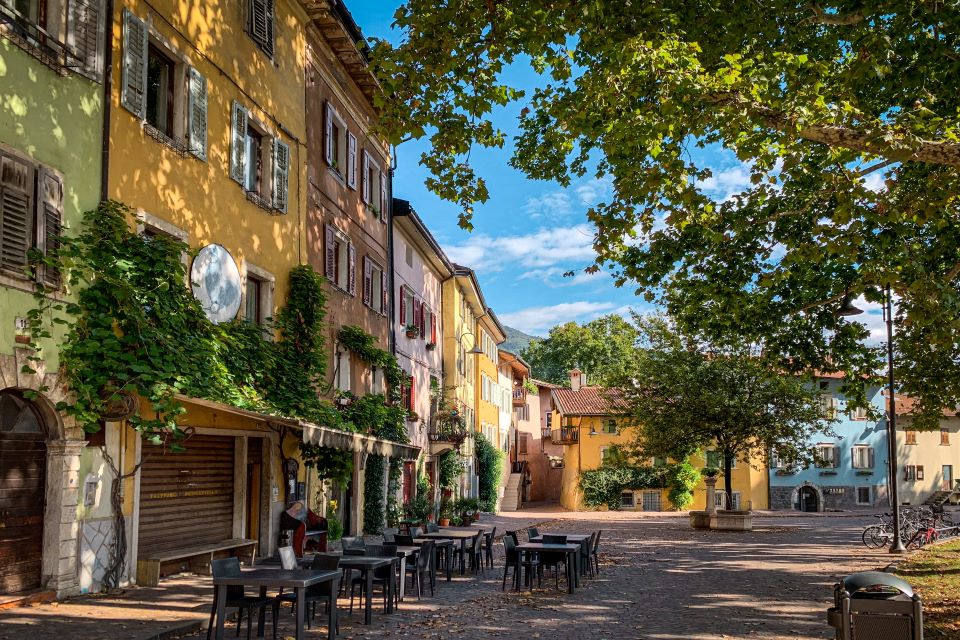
Number of provinces: 2 – Bolzano, Trento
Number of municipalities: 293
Regional capital: Trento
Borders: Austria to the north, Switzerland to the west, Lombardy to the southwest, Veneto to the southeast
Bathed by the sea: –
Main mountains: Ortles (3,899 m), Monte Cevedale (3,764 m), Palla Bianca (3,764 m)
Main rivers: Adige, Avisio, Isarco, Noce, Sarca
Main lakes: Lake Garda, Lake Caldonazzo, Lake Molveno, Lake Ledro
Main islands: –
Airports: Bolzano Airport
Cities of tourist interest: Bolzano, Merano, Rovereto, Bressanone, Riva del Garda, Brunico
9. Marche
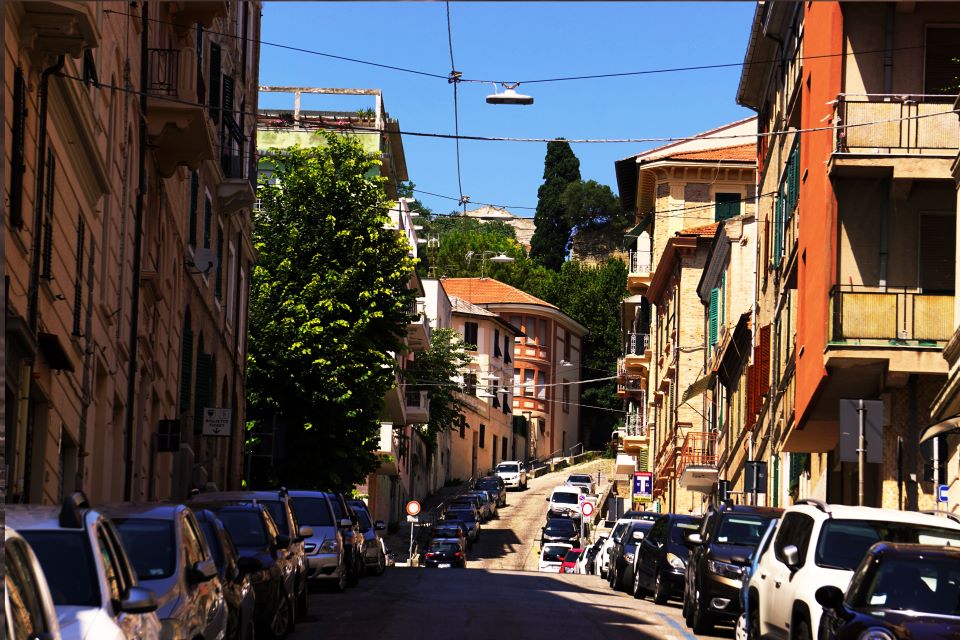
Number of provinces: 5 – Ancona, Ascoli Piceno, Fermo, Macerata, Pesaro and Urbino
Number of municipalities: 236
Regional capital: Ancona
Borders: Emilia-Romagna and San Marino to the north-west, Tuscany and Umbria to the west, Lazio and Abruzzo to the south
Bathed by the sea: Adriatic to the east
Main mountains: Monte Vettore (2.476 m), Monte Priora (2.332 m)
Main rivers: Tronto, Metauro, Chienti, Esino, Foglia, Potenza
Main lakes: Lake Caccamo, Lake Castreccioni or Cingoli, Lake Fiastra
Main islands: –
Airports: Ancona-Falconara Airport
Cities of tourist interest: Ascoli Piceno, Fermo, Macerata, Urbino, Ancona, Pesaro, San Benedetto del Tronto
10. Tuscany
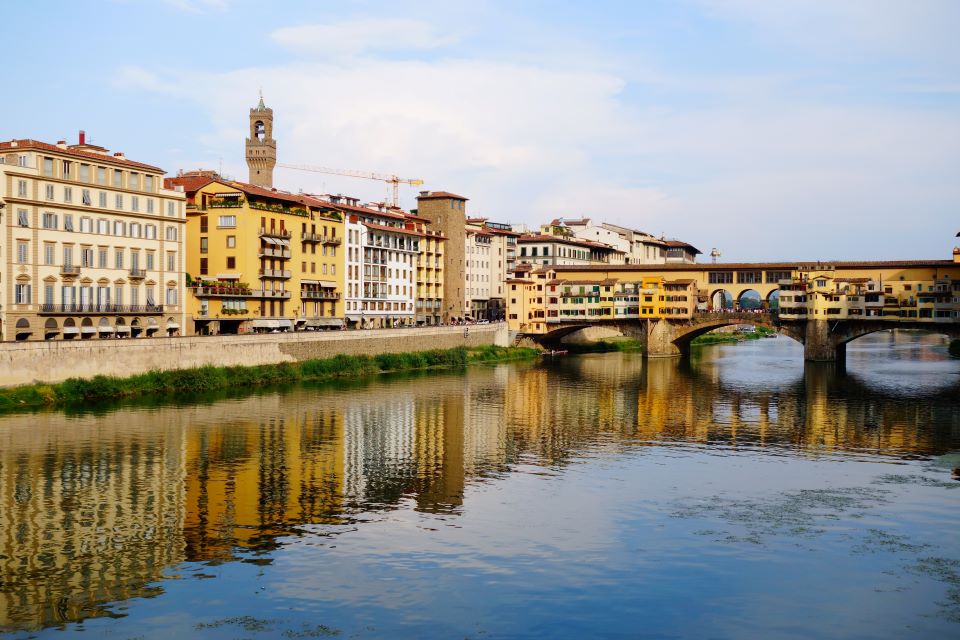
Number of provinces: 10 – Arezzo, Florence, Grosseto, Livorno, Lucca, Massa, Pisa, Pistoia, Prato, Siena
Number of municipalities: 279
Regional capital: Florence
Borders: Liguria to the north-west, Emilia-Romagna to the north, Marche and Umbria to the east, Lazio to the south-east
Bathed by the sea: Ligurian in the center-north, Tyrrhenian in the south
Main mountains: Monte Pisanino (1.946 m), Corno alle Scale (1.945 m)
Main rivers: Arno, Ombrone, Serchio
Main lakes: Orbetello Lagoon, Massaciuccoli Lake, Chiusi Lake, Montepulciano Lake
Main islands: Elba, Giglio, Capraia, Montecristo, Pianosa
Airports: Florence-Peretola Airport, Grosseto Airport, Marina di Campo Airport, Pisa-San Giusto Airport
Cities of courist interest: Florence, Livorno, Lucca, Pisa, Siena, Viareggio, Massa, Prato, Pistoia
11. Umbria
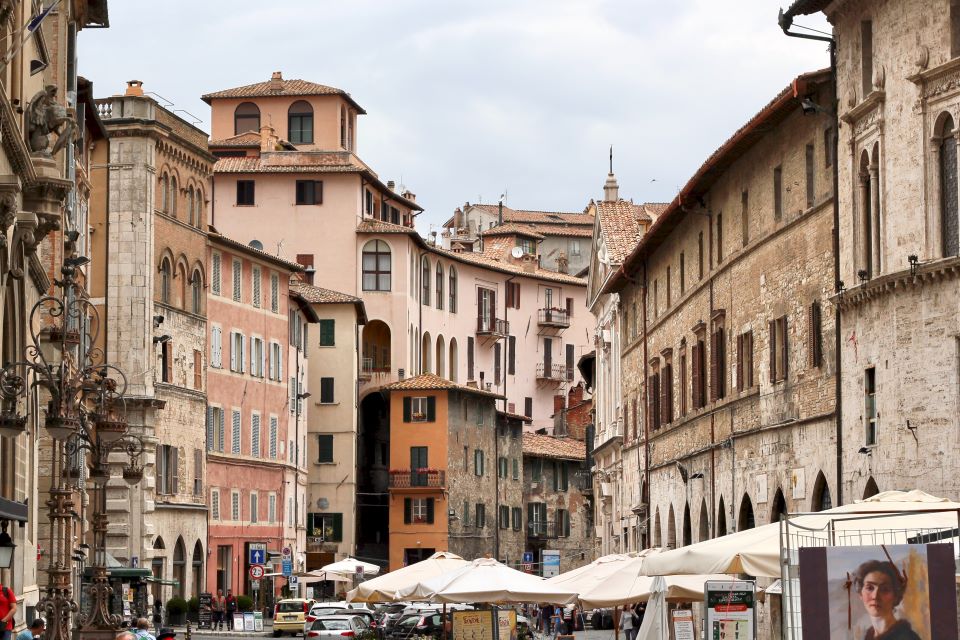
Number of provinces: 2 – Perugia, Terni
Number of municipalties: 92
Regional capital: Perugia
Borders: Marche to the north-east, Tuscany to the west, Lazio to the south
Bathed by the sea: –
Main mountains: Monte Vettore (2.448 m)
Main rivers: Tiber, Nera
Main lakes: Trasimeno Lake, Piediluco Lake
Main islands: Polvese Island, Maggiore Island (in Lake Trasimeno)
Airports: Perugia-Sant’Egidio Airport
Cities of tourist interest: Perugia, Terni, Spoleto, Gubbio, Assisi, Orvieto, Narni
12. Lazio
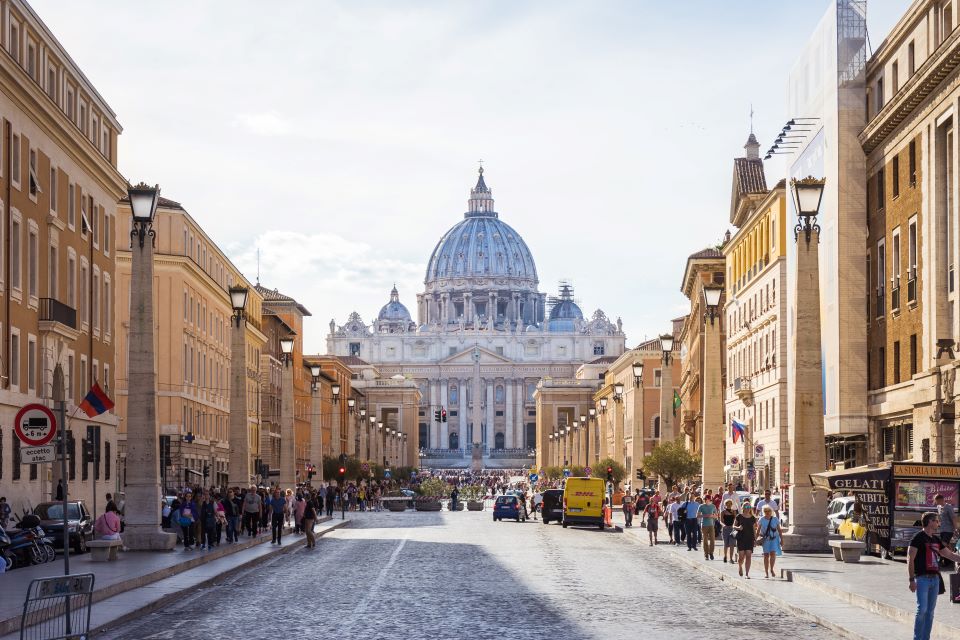
Number of provinces: 5 – Frosinone, Latina, Rieti, Rome, Viterbo
Number of municipalities: 378
Regional capital: Rome
Borders: Tuscany to the north-west, Umbria to the north, Marche to the north-east, Abruzzo and Molise to the east, Campania to the south-east
Bathed by the sea: Tyrrhenian to the west
Main mountains: Monte Gorzano (2,242 m), Monte Terminillo (2,050 m)
Main rivers: Tiber, Liri-Garigliano, Aniene, Velino, Sacco
Main lakes: Lake Bolsena, Lake Bracciano, Lake Vico, Lake Albano, Lake Fondi, Lake Fogliano, Lake Sabaudia
Main islands: Ponziane Islands (Ponza)
Airports: Rome-Ciampino Airport, Rome-Fiumicino Airport
Cities of tourist interest: Rome, Frosinone, Latina, Civita di Bagnoregio, Rieti, Viterbo, Gaeta
13. Abruzzo
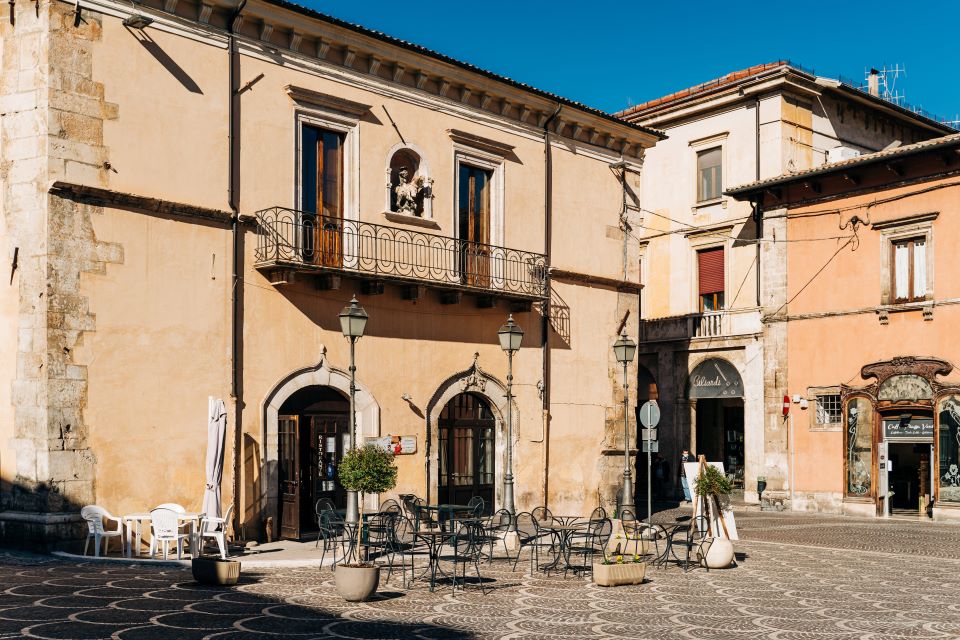
Number of provinces: 4 – L’Aquila, Chieti, Pescara, Teramo
Number of municipalities: 305
Capital of the Region: L’Aquila
Borders: Marche to the north, Lazio to the southwest, Molise to the southeast
Bathed by the sea: Adriatic to the east
Main mountains: Gran Sasso d’Italia (2,914 m), La Maiella (2,795 m)
Main rivers: Liri-Garigliano, Aterno-Pescara, Sangro
Main lakes: Campotosto Lake, Scanno Lake
Main islands: –
Airports: Pescara Airport
Cities of tourist interest: L’Aquila, Pescara, Teramo, Vasto
14. Campania
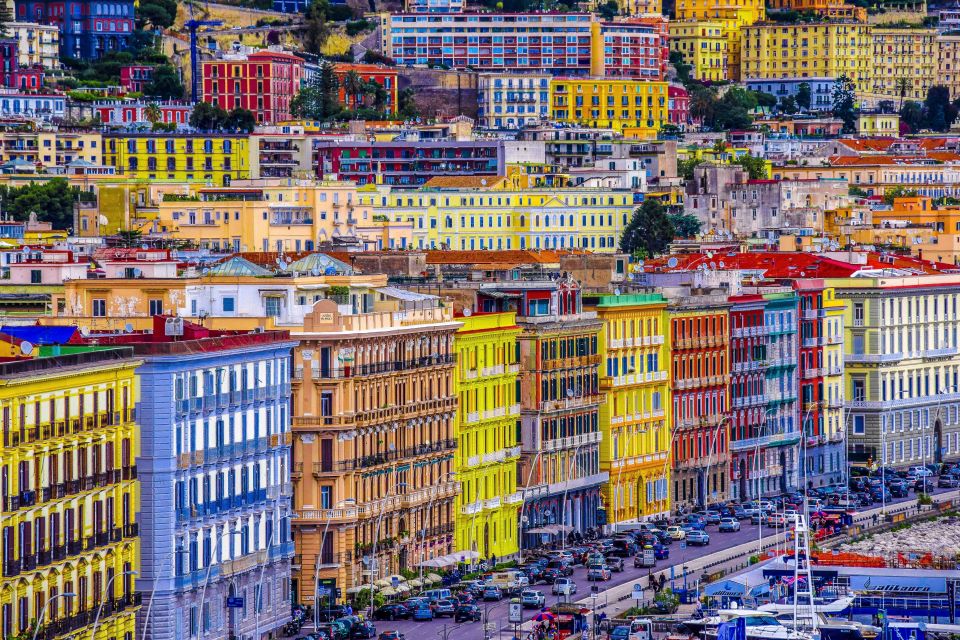
Number of provinces: 5 – Avellino, Benevento, Caserta, Naples, Salerno
Number of municipalities: 550
Regional capital: Naples
Borders: Lazio to the north-west, Molise to the north, Puglia to the north-east, Basilicata to the east
Bathed by the sea: Tyrrhenian to the west
Main mountains: Monte Miletto (2,050 m)
Main rivers: Volturno, Tanagro
Main lakes: Lake Matese, Lake Patria, Lake Fusaro, Lake Averno
Main islands: Ischia, Capri, Procida
Airports: Naples-Capodichino Airport, Salerno-Pontecagnano Airport
Cities of tourist interest: Naples, Avellino, Caserta, Salerno
15. Puglia
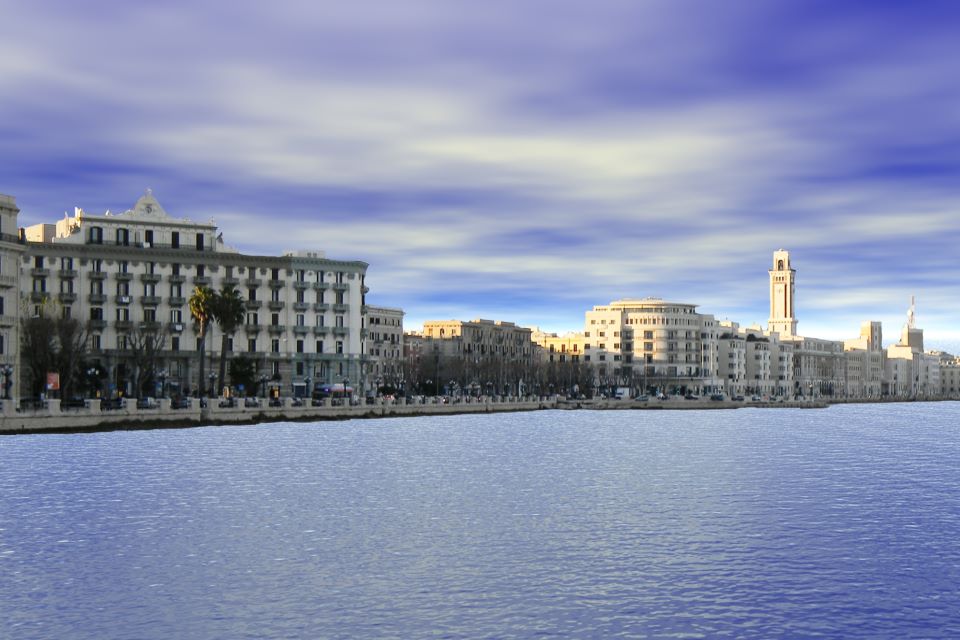
Number of provinces: 6 – Bari, Barletta-Andria-Trani, Brindisi, Foggia, Lecce, Taranto
Number of municipalities: 258
Regional capital: Bari
Borders: Molise and Campania to the west, Basilicata to the south-west
Bathed by the sea: Adriatic in the north, Ionian in the south
Main mountains: Monte Cornacchia (1,152 m)
Main rivers: Ofanto, Cervaro, Fortore, Carapelle
Main lakes: Varano Lake, Lesina Lake
Main islands: Tremiti Islands (San Domino)
Airports: Bari-Palese Airport, Brindisi-Papola Casale Airport, Foggia-Gino Lisa Airport, Taranto-Grottaglie Airport.
Cities of tourist interest: Bari, Barletta, Andria, Trani, Brindisi, Foggia, Lecce, Taranto, Ostuni, Vieste, Polignano a Mare, Alberobello, Peschici
16. Molise
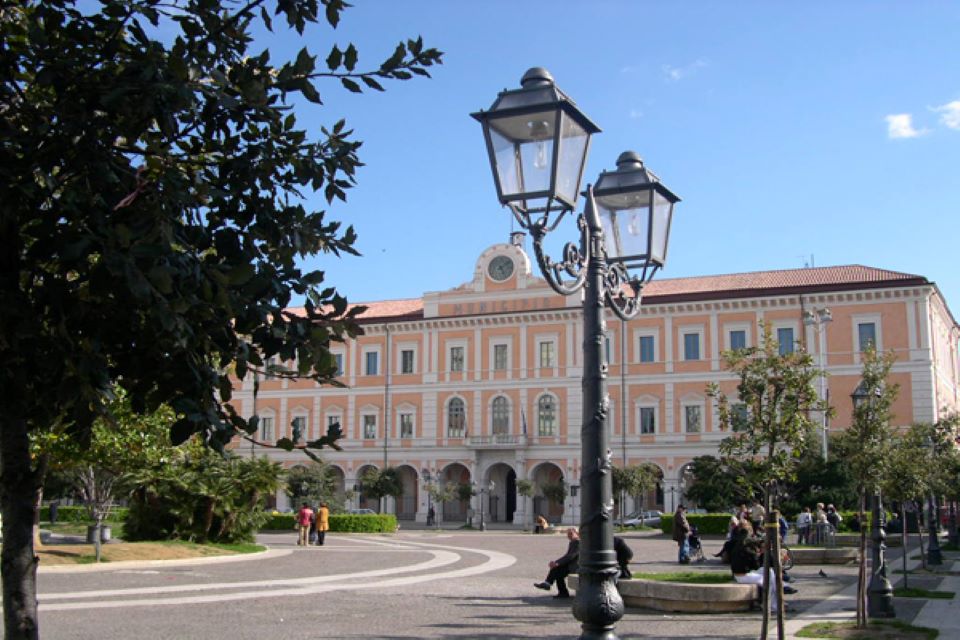
Number of provinces: 2 – Campobasso, Isernia
Number of municipalities: 136
Regional capial: Campobasso
Borders: Abruzzo to the north-west, Lazio to the west, Campania to the south, Puglia to the east
Bathed by the sea: Adriatic to the east
Main mountains: Monte Meta (2,242 m), Monte Miletto (2,050 m)
Main rivers: Biferno, Trigno
Main lakes: Occhito Lake, Guardialfiera Lake
Main islands: –
Airports: –
Cities of tourist interest: Campobasso, Isernia, Termoli, Larino
17. Basilicata
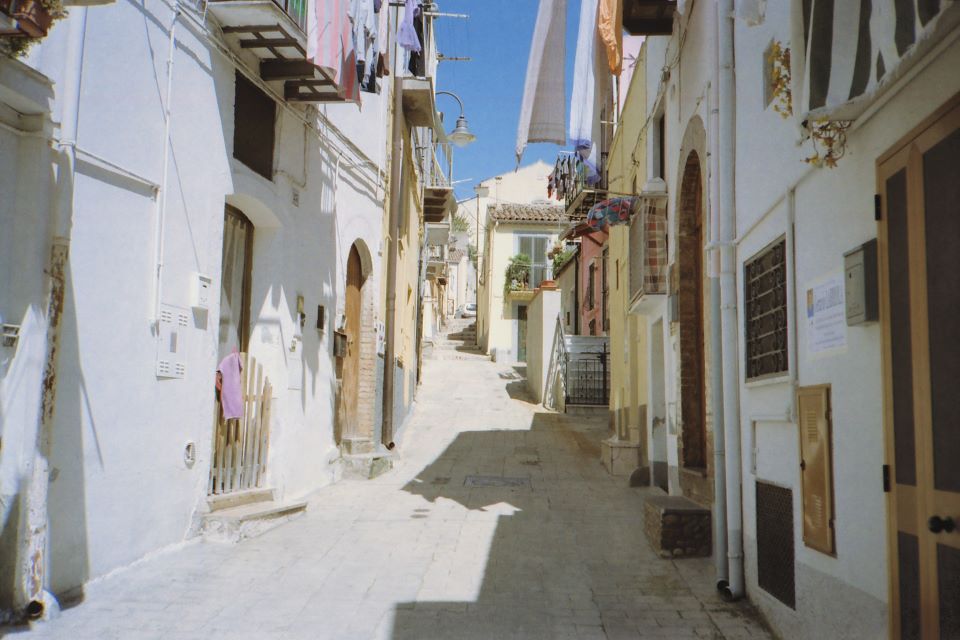
Number of provinces: 2 – Matera, Potenza
Number of municipalities: 131
Regional capital: Potenza
Borders: Campania to the west, Puglia to the north and east, Calabria to the south
Bathed by the sea: Tyrrhenian to the southwest, Ionian to the southeast
Main mountains: Monte Pollino (2,267 m), Monte Sirino (2,005 m)
Main rivers: Basento, Agri, Bradano, Sinni
Main lakes: S. Giuliano lake, Monte Cotugno lake, Pietra del Pertusillo lake, Monticchio lakes (Large, Small)
Main islands: –
Airports: –
Cities of tourist interest: Potenza, Matera, Melfi, Maratea, Brienza, Pietrapertosa
18. Calabria

Number of provinces: 5 – Catanzaro, Cosenza, Crotone, Reggio di Calabria, Vibo Valentia
Number of municipalities: 409
Regional capital: Catanzaro
Borders: Basilicata to the north
Main mountains: Monte Pollino (2,267 m), Monte Pellegrino (1,987 m), Montalto / Aspromonte (1,955 m), Botte Donato / Sila Grande (1,928 m)
Bathed by the sea: Tyrrhenian to the west, Ionian to the east
Main rivers: Neto, Crati
Main lakes: Lake Cecita, Lake Arvo, Lake Ampollino, Lake of the Two Men
Main islands: –
Airports: Lamezia Terme Airport, Reggio Calabria Airport, Crotone Airport
Cities of tourist interest: Catanzaro, Cosenza, Crotone, Reggio Calabria, Vibo Valentia, Lamezia Terme, Tropea
19. Sicily
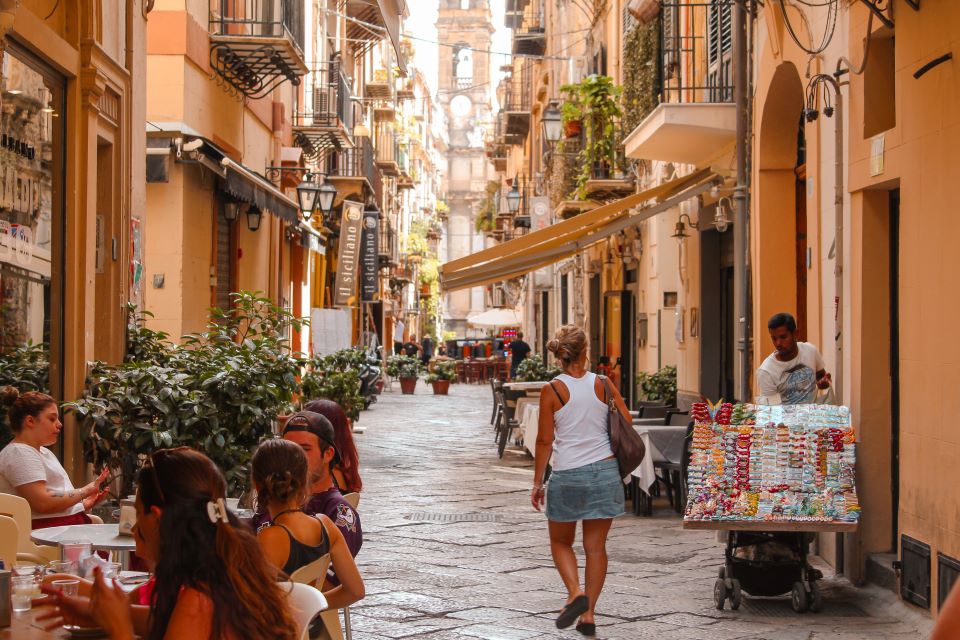
Number of provinces: 9 – Agrigento, Caltanissetta, Catania, Enna, Messina, Palermo, Ragusa, Syracuse, Trapani
Number of municipalities: 390
Regional capital: Palermo
Borders: –
Bathed by the sea: Tyrrhenian to the north, Sicily to the south-west, Ionian to the east
Main mountains: Etna (3,323 m)
Main rivers: Imera-Salso, Simeto
Main lakes: Lake Pozzillo, Lake Lentini, Lake Poma, Lake Ogliastro, Lake Pergusa
Main islands: Aeolian (Lipari, Salina, Vulcano, Stromboli), Egadi (Favignana, Marettimo), Pelagie (Lampedusa), Ustica, Pantelleria.
Airports: Palermo Falcone and Borsellino Airport, Catania-Fontanarossa Airport, Vincenzo Florio Trapani Birgi Airport, Pantelleria Airport, Lampedusa Airport
Cities of tourist interest: Palermo, Cefalù, Catania, Syracuse, Trapani, Mazara del Vallo, Marsala, Ragusa, Sciacca, Taormina
20. Sardinia
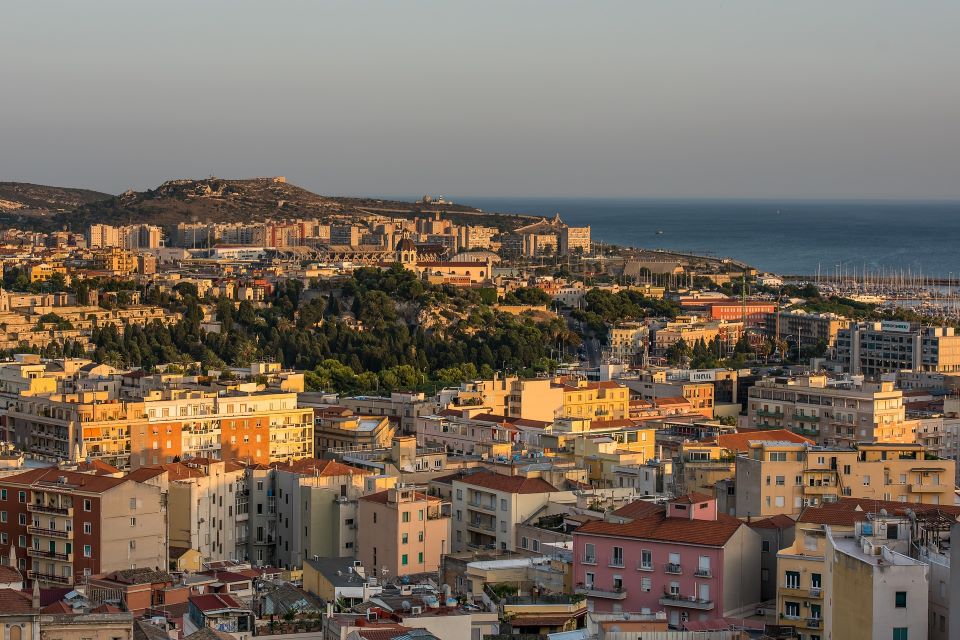
Number of provinces: 5 – Carbonia, Nuoro, Oristano, Sassari, Cagliari
Number of municipalities: 377
Regional capital: Cagliari
Borders: –
Bathed by the sea: Tyrrhenian to the north, Ligurian to the east, Sardinia to the west
Main mountains: Punta La Marmora / Gennargentu (1,834 m)
Main rivers: Tirso, Flumendosa, Coghinas
Main lakes: Lake Omodeo, Lake Coghinas, Lake Baratz
Main islands: Sant’Antioco, San Pietro, Asinara, La Maddalena, Caprera
Airports: Alghero-Fertilia Airport, Cagliari-Elmas Airport, Olbia-Costa Smeralda Airport
Cities of tourist interest: Cagliari, Nuoro, Oristano, Sassari, Olbia, Alghero, Porto Torres
Fun Facts About the Italian Regions
Which regions have a special status? Sicily, Sardinia, Valle d’Aosta, Friuli-Venezia Giulia and Trentino-Alto Adige.
Which regions are at the geographic extremes? To the far north we find Trentino Alto-Adige (Vetta d’Italia, Predoi), to the south Sicily (Punta Sottile, Lampedusa), to the east Puglia (Capo d’Otranto, Otranto), to the west Piedmont (Rocca Bernauda, Bardonecchia).
How many regions are not bathed by the sea? 5 – Valle D’Aosta, Piedmont, Lombardy, Trentino-Alto Adige, and Umbria.
Which region has the most municipalities? Lombardy with 1,527 municipalities.
Which region has the least municipalities? Basilicata with 131 municipalities
Which regions have the highest and lowest population density? Lombardy has the highest density with 419 inhabitants per sq km; Valle d’Aosta has the lowest density with 39 inhabitants per sq km.
Check out these amazing hotel deals!
- Save up to 30% on your hotel in Hawaii!
- Last-minute holiday hotel deals
- Top hotel deals for a new year trip
- Visiting Paris? Find the Best Deals & Reviews at TripAdvisor.
- Save 30% on hotels in Ocean City, Maryland...a TripAdvisor Top 10 Summer Destination!
- Save up to 30% on your hotel on your Winter Vacation!
- Find top-rated hotels at the lowest prices on TripAdvisor. Check rates now!
- Save up to 30% on hotels for a romantic getaway!!
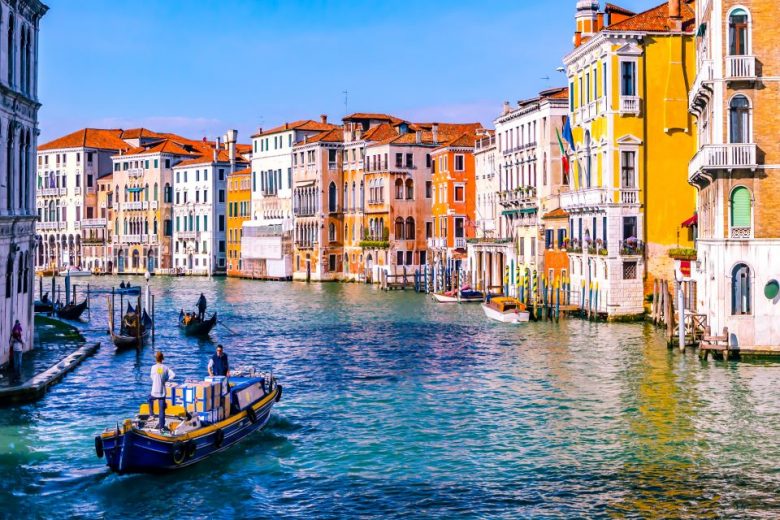





Find Us on Socials